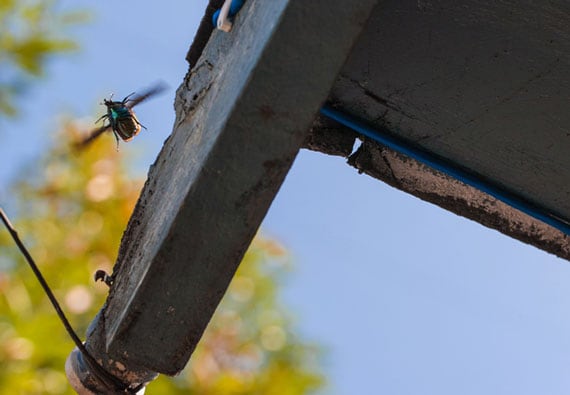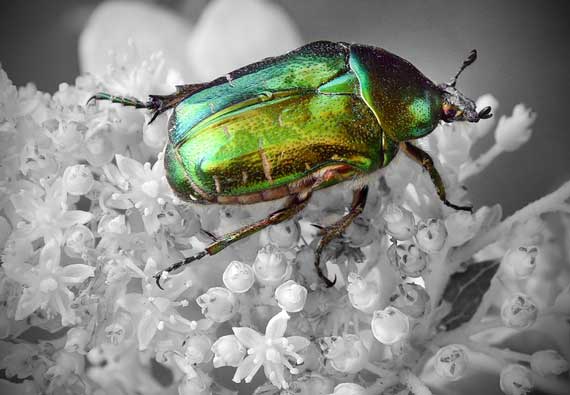Scarab Beetles

Trying to get rid of beetles for good?
Get a FREE Quote & BEST PRICE from a local exterminator
(866) 470-1609Available Next Day
No Obligation Assessment
Guarantee Results
Introducing the Family
There are many species in the family Scarabaeidae, and they are all unique. Some are small, like the Ciervo aegialian, while others are quite huge, like the Goliath. They have different colors and shapes. Some members of the Scarab family are “leaf chafers,” while others feed on dung. Can you guess what is on the menu of these beetles?
Taxonomy
Order:
Coleoptera
Family:
Scarabaeidae
Scarab Beetles’ Behavior and Eating Habits
Dung beetles are classified into groups according to their behavior. They are named dung beetles because their diet consists of fecal material. Sounds gross, doesn’t it? Although unusual, their behavior and eating habits are very helpful for humans and the environment.
With geometric artistry, the dung beetles use their legs and mouth parts to fashion freshly laid dung into huge circular or pear-shaped structures and then roll them into an underground nest prepared by both the male and the female. The female then lays a single egg into each ball of dung and then covers the nest with more dung and soil. When the eggs hatch, the larvae will feed on the fecal matter. Without this natural septic machine, Earth would be piled high with manure.
It is amazing that the dung beetles have the ability to roll balls of dung that weight up to 50 times their own weight. Some types of dung beetles eat particular types of feces, i.e., the dung of sheep, cow, horse, and camels. Another bizarre characteristic of certain beetles is that they eat other dung beetles and their eggs as well. The life expectancy for most dung beetles range from three to five years, with the longest lifelines for those kept in captivity.
Clean Machine
Due to their distinct behavior, dung beetles can be divided into the following three groups: rollers, tunnellers, and dwellers. Rollers succeed more in tropical areas. These beetles roll either sheep or rabbit dung into their burrows. These beetles are most active in winter and hibernate throughout the summer months while living underground.
There is a separation of household duties among these beetles. The female does the digging, while the male collects the dung. She then carefully places the dung in the underground home. Within the home, there are separate burrows where she lays single eggs and then covers them with the remaining dung.
Tunnellers form male and female pairs to perform the task of taking the balls of dung into the tunnels. The female sorts through dung and arranges it for placement throughout the tunnel. The male’s only part in this housekeeping chore is to keep the female well supplied with fresh dung.
True to their name, the dwellers live their lives, as much as possible, inside some sort of dung. They lay their eggs right into it, and the larvae hatch and eat their way through the gastronomical delight.

Trying to get rid of beetles for good?
Get a FREE Quote & BEST PRICE from a local exterminator
(866) 470-1609Available Next Day
No Obligation Assessment
Guarantee Results
The History of the Amazing Scarab Beetles
A dung beetle called “Aksak” was supposed to have made the first woman and man on earth from clay. “The scarab rolls its pellet,” quotes a Taoist text from ancient China, “and life is born in it as an effect nondispersed work spiritual concentration. Now, if even in manure, an embryo can develop and cast his ‘terrestrial’ skins, why should the dwelling of celestial hearts not be able to generate a body too, if we put our spirit on it?”
Scarab beetles can be found in South America and Egypt. Dung beetle fossils date back 40 million years. The Egyptians immortalized the scarab beetle as sacred. The Egyptians believed it represented Ra, the god who rolled the sun across the sky and buried it each night. The scarab beetle became so sacred that it was depicted on unique stones to wear as jewelry. Archaeologists have also uncovered some evidence that Indians tribes in South America also viewed the scarab beetle as a religious symbol.
Ancient amulets, which were used for the deceased and the living, were believed to endow the wearer with the characteristics depicted in their art. Scarab beetle amulets portrayed the beetle’s persistence in rolling a dung ball and reemerging from its hole in the ground. The insect became the symbol of spontaneous generation, new life, and resurrection. One scarab beetle amulet was found in the Ulu Burun shipwreck, confirming that one of the trade paths of this ancient vessel included ancient Egypt. The scarab beetle also appeared in Egyptian heiroglyphs.
The next time you see a beetle — not necessarily a scarab beetle, but any type of beetle — think about its movements, behavior, and characteristics. Observe it carefully. You might be surprised what you will find.
A number of individuals are allergic to cockroaches and may suffer respiratory issues when they are present. The Asthma and Allergy Foundation of America says that cockroach waste is a major trigger for asthma and nasal allergies. If you have other children in the house, it is very important to control their exposure to these sorts of allergens, especially if they have documented respiratory issues such as asthma.

Trying to get rid of beetles for good?
Get a FREE Quote & BEST PRICE from a local exterminator
(866) 470-1609Available Next Day
No Obligation Assessment
Guarantee Results




